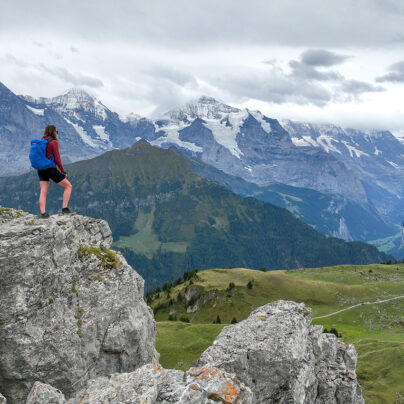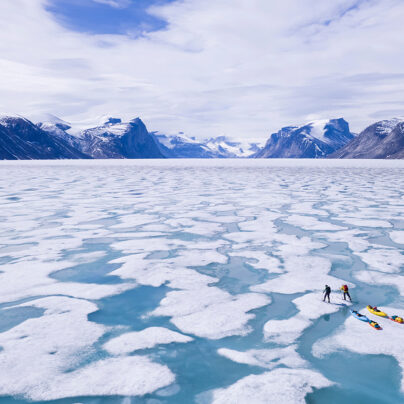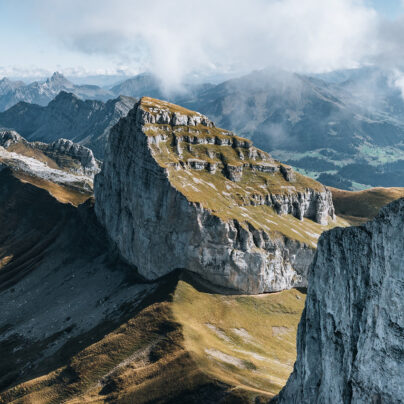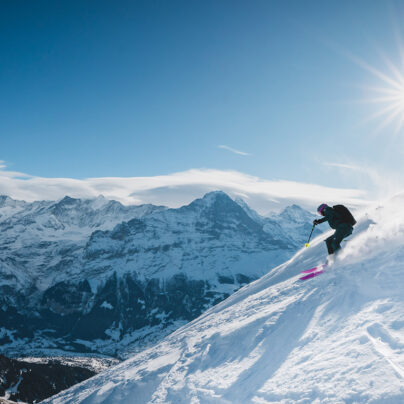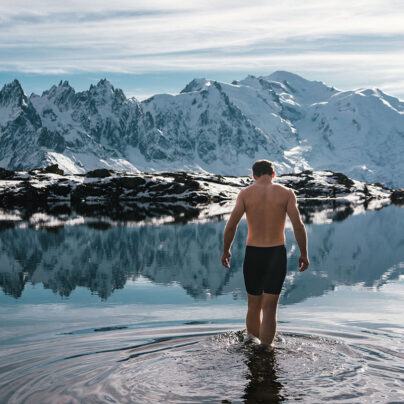Why Explore
Why Expeditions Are Important | Andrew Mazibrada
Even in a time of war, expeditions like Shackleton’s served more than one purpose – to discover, to challenge and to inspire. That Shackleton failed and the expedition necessitated a daring co-operation between nations to effect a dramatic rescue only served to heighten the public appetite for adventure. Perhaps when adversity is at its highest, whether as a consequence of conflict or of economic hardship, we are most inspired by those who brave the harshest conditions to push the boundaries mankind has been set by evolution. There are extraordinary adventures and expeditions happening all around us, from Alex Hibbert’s record-breaking attempt to reach the North Pole unsupported in winter to Mark Kalch’s Seven Rivers on Seven Continents project. In 2004, Ben Saunders became the youngest person ever to ski solo to the North Pole. This year, in October, he’ll set out on another record-breaking expedition, this time to be the first to walk from the coast of Antarctica to the South Pole, and back again. Whilst these journeys push the boundaries of human endurance, how do these achievements affect ordinary people?
We could allow ourselves to be consumed by modern day living or we could choose instead to evolve. Instead of reality television we can seek out the reality in the world around us – the unexplored wilderness containing mysteries and secrets ages old. A little understanding grants us, as individuals and as a species, the knowledge to make informed decisions about who we are where we want to be.
Perhaps when adversity is at its highest, whether as a consequence of conflict or of economic hardship, we are most inspired by those who brave the harshest conditions to push the boundaries mankind has been set by evolution.

Even where the only risk is failure, the rewards for taking on new challenges are significant. We find out more about ourselves in adversity than in comfort. In a world bereft of heroes, the time to be inspired by those willing to seek adventure is ripe
As Paul Salopek traces the footsteps of the beginnings of our closest ancestors who, 50,000 years ago, left Africa and populated the rest of the world, he will follow their ancient route out of the Great Rift Valley of Africa, across the Middle East, through Central Asia to the tundra of Siberia, eventually hopping a boat across the Bering Strait to North America, and trudging from there down the entire length of the New World. Why? Salopek characterises it best: “Many social scientists warn that next century will be a bottleneck for our species. Climate change, growing resource scarcity, the Web-stoked dreams of billions in the developing world—few leaders seem prepared to face these questions squarely. How much longer can the Northern hemisphere’s addiction to cheap oil last? Which societies will innovate transformative solutions? Which will lag behind? The Out of Eden Walk interrogates these challenges at foot level, seeking unsung examples of human ingenuity along the trail.” Sometimes the only way we can understand where we are, and where we are headed, is to commune with the landscape beneath us with our own two feet.
Even where the only risk is failure, the rewards for taking on new challenges are significant. We find out more about ourselves in adversity than in comfort. In a world bereft of heroes, the time to be inspired by those willing to seek adventure is ripe. Politicians and world leaders, inextricably tied now to multinational corporations who wield the real power on behalf of only their shareholders, are no more worthy of our pride, and are even weaker role-models, than glory-seeking sportsmen who abuse narcotics to gain an advantage or media ‘superstars’ who crave attention and false adulation. One wonders whether Shackleton would have received the same sentiments were he to send that same telegram in 2014 rather than 1914. How far have we really come in 100 years?

Felix Baumgartner threw himself from a particularly bijou capsule a very long way up and captured the attention of the world. Yet, whilst his primary motivation may well have been a personal one, he captured valuable data for future space exploration. Other expeditions have a more direct, altruistic motive at their hearts – expeditions are currently studying data from subglacial water pressure in Greenland and its consequential effect on iceflow; the Quelccaya ice cap, the Earth’s largest tropical ice cap, which is 5,670m above sea level in the southeastern Andes of Peru; where tornados come from, why they are so powerful and how we might get an early warning system in place; assessing the potential of ice patches in the Chersky Range (Magadan Region, Russia) to contain organic prehistoric artifacts; and placing a second camp in the 21 mile long Chestnut Ridge cave system where explorers will be days from help.
It may seem as if the physical landscape of the planet we inhabit have little left to show us and, perhaps, where it concerns mapping the ground under our feet, that may be true. Computers and satellites may well have done that job better than we could ever hope to. But what is contained within that ground, above it, below it and in the sea surrounding it holds the key to our history, our future and, possibly, the travails that plague us – disease, energy, famine and climate change. And technology alone can’t get us that valuable information, although it may well offer invaluable help.
Expedition, adventure, exploration – words that kindle in the right people something approaching religious zeal and fervour – these are endeavours that people have, in the past, died for. Through them, and the brave people who follow them, we discover who we are as a race and where we are headed. Rather than living life through the looking glass of contrived dramas written for our amusement, we can create our own, real-life screenplay which will sear onto our memories high-definition images we see with our own eyes, rather than through the eyes of a director/writer we do not even know or who may not share the same ideals and priorities as us. Adventure is, as Saunders puts it “the juice that we can suck out of our hours and days.” Or perhaps, put another way, adventure allows us to see through the prism of our daily existence and understand with crystal clarity who we really are. Yet, it need not be a high-profile, sponsored expedition which is the most valuable to the individual – simply pushing your own envelope will change the way you view your place in the world and bring huge personal satisfaction. And for that reason alone, none of the adventure we seek is frivolous.

Andrew Mazibrada is an adventure travel and outdoor writer and photographer. He is a member of the Outdoor Writers and Photographers Guild and is Joint Editor for Sidetracked.
W: http://www.journeymantraveller.com
T: JourneymanTrav
Photography
Thanks to Steve Behaeghel for the photographs that accompany this article. Steve and Katrijn have spent the past year travelling in South America. Read more about their adventures and check out the incredible photography on www.patagoniandreams.com or follow Steve on Twitter @stevebehaeghel




